

Stephen Landrum interview
By James
Hague
(1993)

Stephen Landrum will go down in 2600 history as the man responsible for Communist Mutants From Space for the Starpath Supercharger. He has also been involved in the design of several other 2600 games, including the excellent Supercharger version of Frogger. Since then, he has left his mark on dozens of games, including Blue Lightning for the Atari Lynx. Stephen was kind enough to recall days gone by for the 2600 Connection.
Q: How did you come to work for Starpath?
Stephen Landrum: A friend of mine, Craig Nelson, was starting a company in 1981 called Acorn. He and Bob Brown had worked together at Atari, and then later at HMSI (Hitachi's American branch) and they wanted to make a device that could load games into the Atari 2600 from cassette tape. I had gone to school with Craig's younger brother, Scott, and when Craig first started looking for programmers, he started with friends and acquaintances. At the time, I was working for Science Applications Inc., but I jumped at the chance to write computer games. After several name changes, the company was eventually called Starpath. Actually, some units of the Supercharger and the first three games went out while the company was called Arcadia.
Q: Had you programmed any commercial games prior to Communist Mutants From Space?
Stephen Landrum: Sort of. I had written a number of simple BASIC and assembler games on the Apple II. None of them were of any commercial value, but another friend wanted to start a software company, and asked if I would spruce up one of my games (it was originally done in lo-res graphics, and had no sound effects). The game was called Viper, and was similar to the UNIX game Snake or to the ancient coin-op games Surround or Dominos. Sirius Software was coming out with a nearly-identical game called Snake Byte, and they bought the rights to my game to take it off the market. Communist Mutants From Space was my first real commercial title.
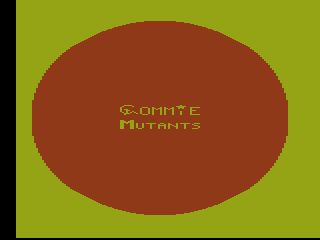
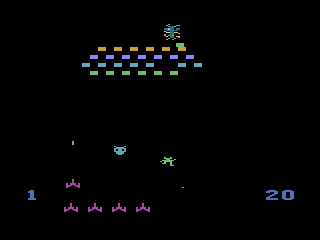
Q: Was Communist Mutants an original design or was it something you were assigned to write?
Stephen Landrum: It was my idea, but I doubt that you could call the design very original. It was based on coin-op games that I liked at the time - Space Invaders, Galaxian, Eagle, and others.
Q: How long did it take to write?
Stephen Landrum: I don't recall exactly how long it took to write the game, but I think that the total time spent was around six months. of course, I also spent some of that time just working out how the 2600 worked. We had to reverse-engineer the unit, and discovered that it had some capabilities that its designers didn't even know about.
The game was experimental in many ways. I was trying to push the limits of the 2600 to see what I could get it to do. The 2600 is very limited in its graphics capabilities. Little things in the game that don't mean anything to the consumers blew away people who knew how to program the 2600. The fact that I had six digits of score on one side of the screen, and another digit on the other side, or that the flags could show more than six on a row were both believed impossible until Communist Mutants did them.
Q: Did you work entirely by yourself?
Stephen Landrum: Yes. I did all of the programming, artwork, and animation design and sounds effects. On computer or video games today, it is rare for any project to be done by fewer than three people, and it is not uncommon to have teams of a dozen or so.
Q: The obvious question I'm sure you've heard many times - about the name Communist Mutants From Space...
Stephen Landrum: I would like to take credit for the name, but I can't. It was developed by our advertising agency, and was the best thing that they did for Starpath. I must admit that I was really surprised when they suggested the name. I thought they were joking, but when I realized that they were serious, I couldn't believe it! It took me a little while to realize that the outrageousness of the name would actually help the program. We had a great poster made up from the artwork for the box cover, but unfortunately I only have one of them. We should have sold the poster, as it would have made quite a bit of money.
Q: Were there any Easter eggs in any of your games?
Stephen Landrum: In Communist Mutants, you can get the word "HI" on the score screen to change to "SHL" by holding down the button on the joystick while the game loads. In DragonStomper, enter the "use shield" command while the image of the axe is on the screen and "SHL" appears on the bottom line of the command box.. Frogger has no hidden messages or bonuses. I had intended to put one in, but never got around to it.
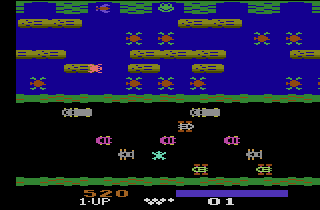 Q:
Tell me about Frogger. Your version was a big improvement over the Parker
Brothers cartridge. How was Starpath able to release the same title?
Q:
Tell me about Frogger. Your version was a big improvement over the Parker
Brothers cartridge. How was Starpath able to release the same title?
Stephen Landrum: Parker Brothers had licensed the ROM cartridge rights for Frogger for home computers and game systems. Sierra On-Line had licenses the magnetic media (cassette tape and floppy disk) rights for home computers and game systems. Starpath sub-licenses the rights from Sierra On-Line. Since our games were on cassette tape, we got a good arrangement on the license because there was no other way that Sierra was going to get a 2600 version of the game.
I remember seeing Frogger at a CES trade show, and people were saying that Parker Brothers had the best conversion that had ever been done for the 2600 of an arcade title. I looked at it, and their version was good, but I insisted that I could make one that was much better. When we discovered the loophole in the licensing arrangements, I got the opportunity to prove it.
When I did Frogger for Starpath, we got a coin-op machine and moved it into my office so that I could study the game. I got really good at it, and could wrap the score eventually. I tried to make the patterns and timing as similar as possible in the 2600 version, and did my best to copy the music as well. The whole conversion from start to finish took about three-and-a-half months.
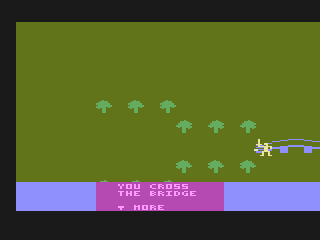
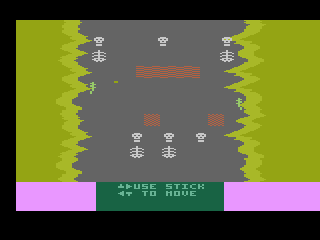

Q: What other 2600 games did you have a hand in?
Stephen Landrum: The titles that were all mine were Communist Mutants, DragonStomper, and Frogger. I also did the final programming on Suicide Mission after Steve Hales left Starpath (Arcadia at the time).
DragonStomper took about seven months to complete. I chose to do DragonStomper because nobody had done a real fantasy role-playing game on the 2600 up to that point. There was Adventure, but at the time I didn't consider it a real FRP.
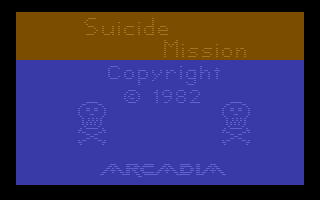
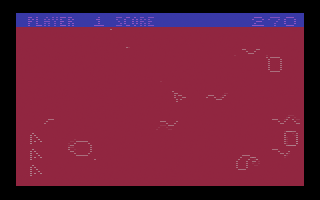
Q: Technical information about the Supercharger is hard to come by. Could you give an overview of the features it provided or any internal information about it?
Stephen Landrum: The Supercharger plugs into the cartridge slot of the 2600, and has a mono jack to plug into a portable tape cassette player. Internally, the Supercharger has 2K of ROM and 6K of RAM, and a custom gate array chip that monitored the tape signal and controlled the bank-switching and read/write control to the RAM. The tape loading code in the ROM of the Supercharger could load data at variable speeds, and in fact our tapes were recorded at different speeds on the two sides. The A side of the tape had an average bit frequency of 2K Hz - the A side would load faster, but the B side was more reliable if the cassette player needed head cleaning or alignment. Having all of our game memory in RAM proved to be a big advantage for programming the 2600 at the time. The base unit only has 128 bytes of RAM. Loading games from tape also had another advantage - we could develop games that weren't all in memory at one time. DragonStomper and Escape from the MindMaster were the first games to use the multi-load capability of the system.
Q: What sort of computer system did you use for development of Supercharger games?
Stephen Landrum: All of our Supercharger games were developed on Apple II computers. We used an assembler derived from the SC Assembler for the Apple II, but heavily modified by us. All of our systems had Axlon 320K RAMdisks, which we used as RAM for our assembler, and some of the systems had accelerator cards.
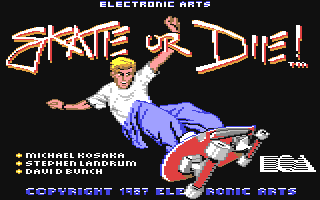 Q:
Did you leave Starpath when the market crashed? Those were hard times for
game designers...
Q:
Did you leave Starpath when the market crashed? Those were hard times for
game designers...
Stephen Landrum: I didn't exactly leave Starpath. Starpath, as with many other companies at the time, was in serious financial trouble. The programmers at Epyx had just left to form another company, and Epyx and Starpath shared some common investors, so the investors decided that it would be a good idea to merge the two companies together. Most of the management at Starpath was let go, but the programming staff was kept on during the merge.
Q: What have you done since then?
Stephen Landrum:
From March 1981 through November 1983 I worked at Starpath.
From November 1983 through February 1987 I worked at Epyx. At Epyx, I was
the lead programmer on a number of games for the C-64, Apple II, and Atari 800.
I also did a lot of 'firefighting' - that is, join a project that was in
trouble, and bring it to a close. From February 1987 through November 1988
I worked at Electronic Arts. At Electronic Arts, I was the lead programmer
on Skate or Die! for the C-64. After Skate or Die!, I was technical
director for the action games group. From November 1988 u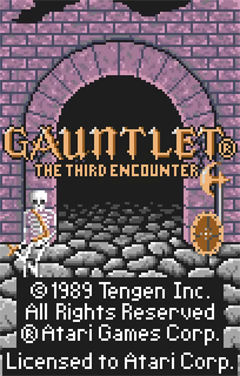 ntil
October 1990 I returned to Epyx to join the Lynx development project (we called
it Handy at that time). This time around, I wrote Blue Lightning
for the Lynx, worked on the system software for the Lynx, and finished the
programming on Gauntlet: The Third Encounter after Jon Leupp left.
ntil
October 1990 I returned to Epyx to join the Lynx development project (we called
it Handy at that time). This time around, I wrote Blue Lightning
for the Lynx, worked on the system software for the Lynx, and finished the
programming on Gauntlet: The Third Encounter after Jon Leupp left.
Q: What are you up to these days?
Stephen Landrum: I am working at a new company called New Technologies Group - nice and vague, isn't it - with RJ Mical and Dave Needle. RJ and Dave had headed up the Lynx division at Epyx. Unfortunately, I can't say what it is that we're working on.
Q: Did you have any unfinished 2600 games which were never released?
Stephen Landrum: Not really. I had several early screens and animations that I was playing around with, but nothing which was really approaching a game (Ed: Stephen also worked on Sword of Saros and Sweat: The Decathlon Game).
Q: Any ideas for games you would liked to have done for the 2600?
Stephen Landrum: If you had asked me a few years ago, I could have answered. I've worked on too many things since then to really recall.
Q: It has been many years since the crash. Do you think video games have improved or taken a step back?
Stephen Landrum: Video games have definitely come a long way. I don't necessarily like every new trend I see in video games, but the industry is still really in its early stages.
Q: What do you see as the biggest problems facing the industry today?
Stephen Landrum: Too little forward-thinking. Most people and companies are out there trying to make a buck today, and are not planning for anything for the future. Of course, it is not easy to plan for the future, given the rate of change that everything is going through today.
Q: On a lighter note, what are your all-time favorite games?
Stephen Landrum: I like so many games, it's so hard to choose. I'll give it a stab, though. One of my all-time favorite coin-op games was Tempest. I also played Q*bert and Dig Dug a lot.
As for home computer games, The Bard's Tale held my interest for quite a while, and I was absolutely addicted to Tetris. Populous was fun, too, but it had too many levels that were too similar. Oh yeah, Super Breakout on the Atari 800 was definitely a winner. Zork on the mainframes has to be one of the all-time classics, but I didn't really like the home versions. Of course, when I was playing it, the programmers were still changing and expanding the dungeon, so it was very exciting to enter familiar territory and find something new. For the Nintendo system, I thought that The Legend of Zelda was very well done, and Super Mario Brothers 3 and Super Mario World were a lot of fun. To be honest though, I prefer pinball games to video games. one of my favorite pins of all time is Middle Earth by Atari. Flash was fun. Terminator II and Fun House get my quarters these days when I drop by the arcades. I also play board games with friends on the weekends. Can you guess why I might have gotten into this industry?
| GAME | SYSTEM | COMPANY | STATUS |
| Communist Mutants From Space | Atari VCS/2600 | Starpath | released |
| DragonStomper | Atari VCS/2600 | Starpath | released |
| The Official Frogger | Atari VCS/2600 | Starpath | released |
| Suicide Mission | Atari VCS/2600 | Starpath | released |
| Sword of Saros | Atari VCS/2600 | Starpath | released |
| Sweat: The Decathlon Game | Atari VCS/2600 | Starpath | not completed |
| Summer Games | Atari 400/800, C-64 | Epyx | released |
| Ballblazer | C-64 | Epyx | released |
| Barbie | C-64 | Epyx | released |
| Pitstop II | C-64 | Epyx | released |
| Summer Games II | C-64 | Epyx | released |
| Temple of Apshai Trilogy, The | Atari 400/800, C-64 | Epyx | released |
| Movie Monster Game | C-64 | Epyx | released |
| Super Cycle | C-64 | Epyx | released |
| Skate or Die! | C-64 | Electronic Arts | released |
| Jordan vs Bird: One on One | C-64 | Electronic Arts | released |
| Blue Lightning | Lynx | Epyx | released |
| Chips Challenge | Lynx | Epyx | released |
| Zarlor Mercenary | Lynx | Epyx | released |
| Gauntlet: The Third Encounter | Lynx | Epyx | released |
| 3DO operating system | 3DO | The 3DO Company | released |
| M2 operating system | 3DO | The 3DO Company | released |
| Escape from Monster Manor | 3DO | Electronic Arts | released |
| Way of the Warrior | 3DO | Naughty Dog | released |